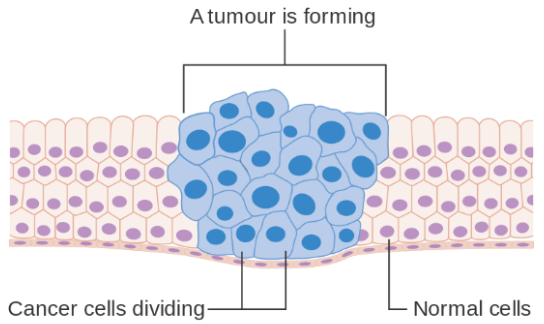Applications of Calculus: Modeling Tumor Growth
Deriving the Gompertz function.
This post is part of the series Connecting Calculus to the Real World.
Want to get notified about new posts? Join the mailing list and follow on X/Twitter.

Calculus can help us model the growth of tumors.
Tumors appear to grow exponentially early in their lifecycles, which means that if a tumor’s volume at time $t$ is given by $V(t)$ and its growth rate is a constant $r,$ then
However, tumors do not grow exponentially forever: it has been observed that after some time, tumor growth slows down.
To incorporate this into our model, instead of setting the growth rate to a constant r, we can set it to an exponential decay function given by
Then the full model is
We can separate variables and integrate to solve for $V:$
We can solve for one of the constants in terms of the initial volume and the other constant:
When we plug the constant back in, it cancels out the other constant to yield a final formula:
This is called the Gompertz function, and it has been used to model tumor growth and measure the effectiveness of tumor-killing treatments.
This post is part of the series Connecting Calculus to the Real World.
Want to get notified about new posts? Join the mailing list and follow on X/Twitter.